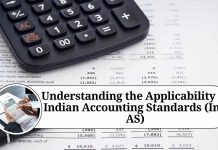Inventories are the backbone of any manufacturing or trading business. They are the goods that a company produces or purchases for the purpose of resale or use in production. Inventories include raw materials, work in progress, finished goods, and other consumables. Proper valuation of inventories is crucial for accurate financial reporting and decision-making. Accounting Standard 2 (AS 2) provides guidance on the valuation of inventories. In this blog, we will discuss the key aspects of AS 2.
Scope of AS 2
AS 2 applies to all inventories, except for:
- Work in progress arising under long-term service contracts;
- Shares, debentures, and other financial instruments held as stock-in-trade;
- Livestock; and
- Agricultural and forest products.
Valuation of Inventories
AS 2 requires that inventories be valued at the lower of cost or net realizable value (NRV). Cost refers to the cost of purchase or production of inventories. It includes all costs incurred in bringing the inventories to their present location and condition. Cost may be determined using any of the following methods:
- Specific Identification Method – This method involves identifying the cost of each item of inventory.
- First-in, First-out (FIFO) Method – This method assumes that the first items purchased or produced are the first items sold or used.
- Weighted Average Method – This method involves taking an average of the cost of all items in inventory.
Net realizable value is the estimated selling price in the ordinary course of business, less the estimated costs of completion and selling expenses.
The requirement to value inventories at the lower of cost or NRV ensures that inventory is not overvalued, and any decline in the value of inventory is recognized in a timely manner.
Disclosure Requirements
AS 2 requires that the following disclosures be made in the financial statements:
- The accounting policies adopted for determining the cost of inventories, including the cost formula used;
- The total carrying amount of inventories and its classification according to the nature of the inventory;
- The amount of inventories recognized as an expense during the period; and
- The amount of any write-down of inventories recognized as an expense during the period.
Conclusion
AS 2 provides guidance on the valuation of inventories, which is critical for accurate financial reporting and decision-making. The standard requires inventories to be valued at the lower of cost or net realizable value and provides guidance on determining the cost of inventories. Companies must ensure that they comply with the disclosure requirements of AS 2 to provide stakeholders with complete and accurate information about their inventories. Proper implementation of AS 2 can help companies improve their inventory management, reduce the risk of inventory obsolescence, and avoid financial misstatements.
Other Related Blogs: Section 144B Income Tax Act
Frequently Asked Questions (FAQs)
Q. What is AS 2?
AS 2 is an accounting standard issued by the Institute of Chartered Accountants of India (ICAI) that provides guidance on the valuation of inventories.
Q. Who does AS 2 apply to?
AS 2 applies to all entities that prepare financial statements in accordance with Indian Accounting Standards (Ind AS).
Q. What is the objective of AS 2?
The objective of AS 2 is to prescribe the methods of determining the cost of inventories and the manner of their recognition as an expense.
Q. What is the scope of AS 2?
AS 2 applies to all inventories, except for work in progress arising under long-term service contracts, shares, debentures, and other financial instruments held as stock-in-trade, livestock, and agricultural and forest products.
Q. How should inventories be valued under AS 2?
Inventories should be valued at the lower of cost or net realizable value (NRV).
Q. What is the cost of inventories?
The cost of inventories includes all costs of purchase, costs of conversion, and other costs incurred in bringing the inventories to their present location and condition.
Q. What are the methods of determining the cost of inventories?
The cost of inventories may be determined using the specific identification method, first-in, first-out (FIFO) method, or weighted average method.
Q. What is net realizable value (NRV)?
Net realizable value is the estimated selling price in the ordinary course of business, less the estimated costs of completion and selling expenses.
Q. What is the purpose of valuing inventories at the lower of cost or NRV?
The purpose of valuing inventories at the lower of cost or NRV is to ensure that inventories are not overvalued and any decline in the value of inventory is recognized in a timely manner.
Q. What are the disclosure requirements of AS 2?
AS 2 requires entities to disclose their accounting policies for determining the cost of inventories, the total carrying amount of inventories, the amount of inventories recognized as an expense during the period, and the amount of any write-down of inventories recognized as an expense during the period.









I was looking at some of your blog posts on this website and I believe this web site is real instructive! Keep posting .
Thanks for this post, I am a big big fan of this site would like to keep updated.